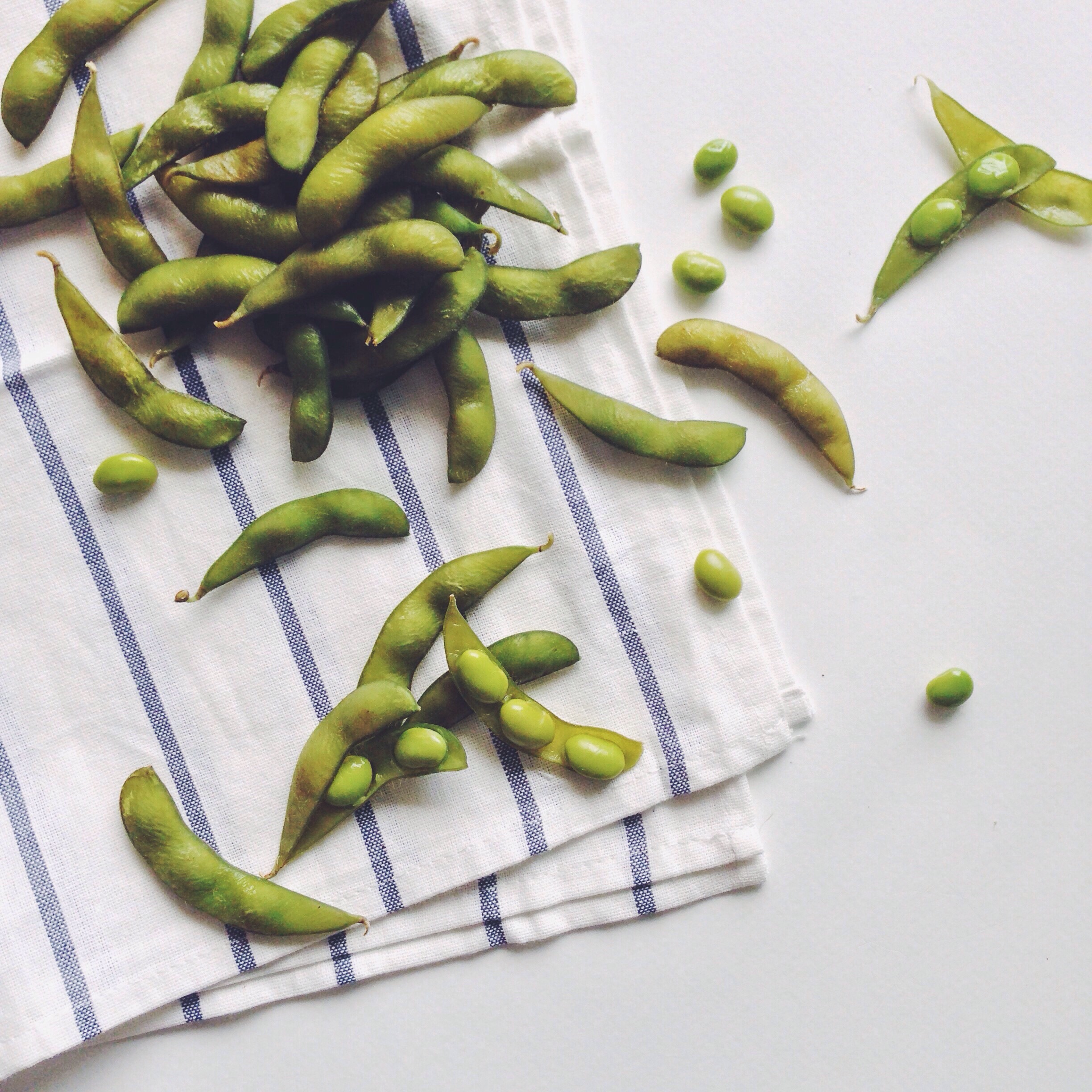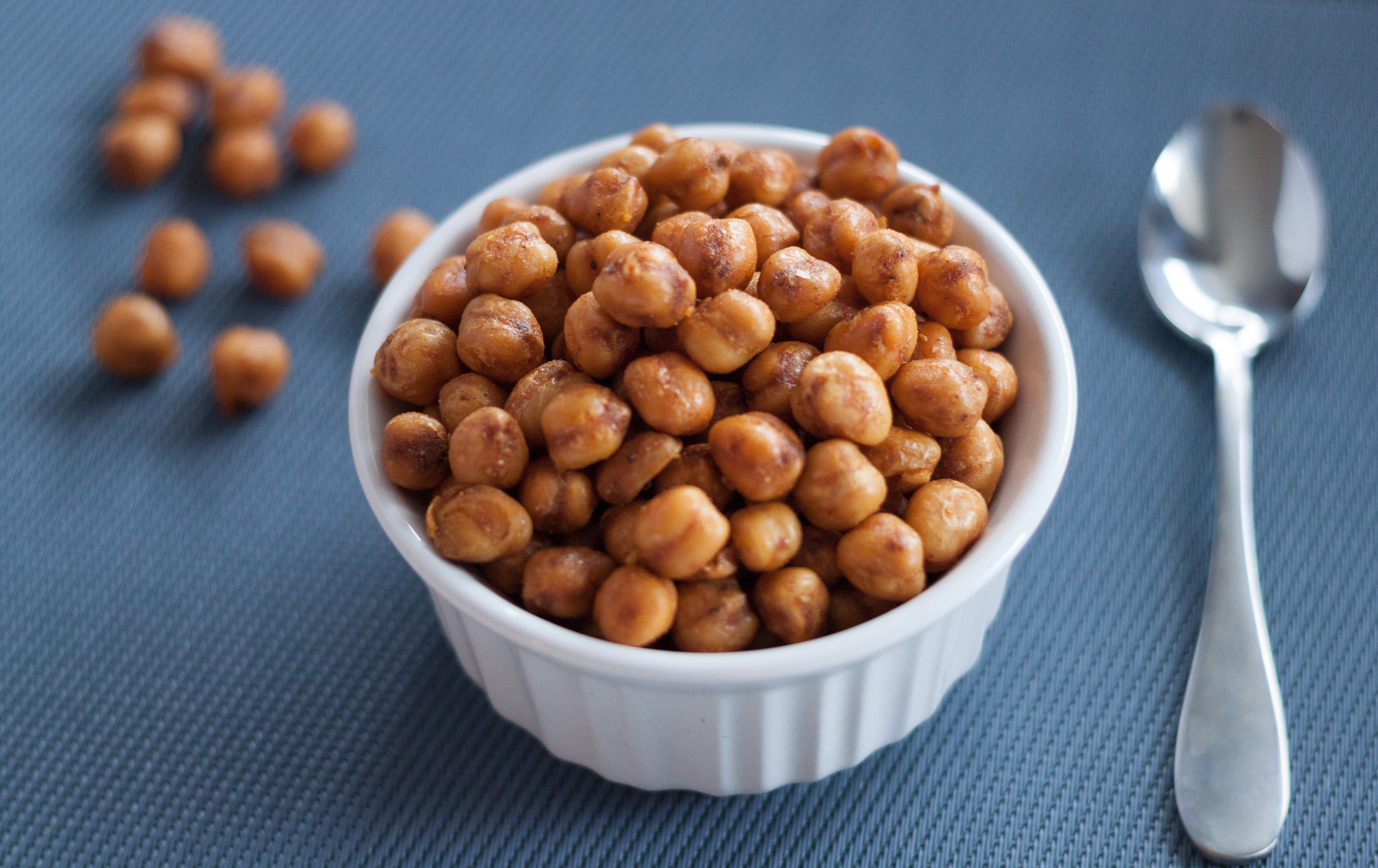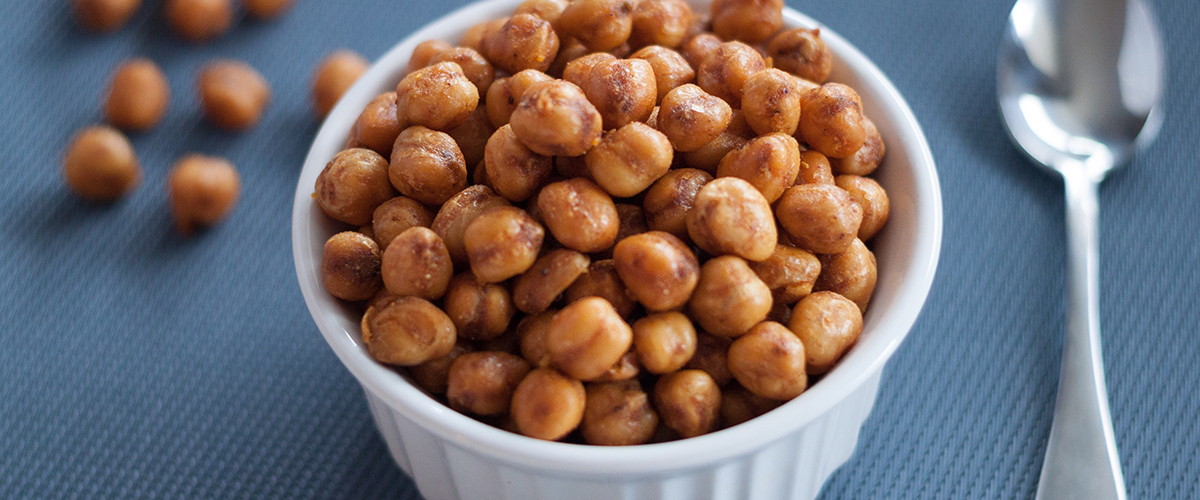Protein—alongside carbohydrates and fats—is a macronutrient essential to our overall health and well-being. It serves as one of the body’s essential building blocks. We need it to build muscle, and to keep us feeling satisfied long after we eat.

Edamame in the shell.
When most people think of protein, they think of a chicken breast, steak, or another form of meat. While meat is high in protein, it’s not the only source. There’s a myriad of plant-based proteins (and we’re not just talking about tofu) like legumes (beans, peas and lentils), nuts, and seeds to choose from. Plant-based proteins not only contain valuable nutrients like fiber and vitamins, they can also help you eat more “plant-forward.” This growing cooking and eating trend places vegetables at the center of the plate, with smaller portions of meat as a garnish.
We spoke with Aramark Chef George Drakulich (who happens to be a vegan himself) for some fresh, innovative, and for some, perhaps adventurous ways to use plant-based proteins throughout your day. Read on to kick start your recipe planning and for help putting plants forward in your next meal!
Chipotle Tempeh Power Bowl
I’m a huge fan of Mexican flavors and dishes, so this easy recipe is a go-to that I thoroughly enjoyed for dinner the other night with my wife and daughter! It combines great sources of fiber, protein, as well as some essential fats and vitamins. First, use a simple brown rice and quinoa blend that you’ll add a touch of cumin to, and place to one side of the bottom of a bowl. Place some shredded raw red cabbage next to the rice, then some lightly seasoned black beans next to that. As for the tempeh, steam it for 10-12 minutes (I find steaming the tempeh first makes it more enjoyable to eat, and easier to flavor). Next, dice and sauté with it onions, fresh tomatoes, chipotle peppers, garlic, and some sea salt. Finally, place the sautéed tempeh mix on top of the other ingredients, and garnish with chopped cilantro, toasted pepitas (pumpkin seeds), and a squeeze of fresh lime juice.
Tofu Lasagna
Tofu is like a blank slate, you can do pretty much anything with it. While I have made countless dishes with tofu, my favorite is using it as a substitute for ricotta when I make lasagna. Most importantly, you want to make sure you press out the water before using tofu, especially if you are marinating it, as the new liquid you introduce will replace the water and be reabsorbed. After you press and drain the tofu, whip it in a food processor with some garlic, sea salt, and lemon zest. Once smooth and silky, remove and fold in some chopped basil. It works in any traditional lasagna recipe, or just as a dip with some pita chips.
Hemp Seed Hummus
Hemp seeds are one of the very few plant proteins that are complete, which means they contain all of the essential amino acids, including the ones our bodies can’t produce themselves. I like adding shelled hemp seeds to my hummus base by simply placing them and some sea salt in a food processor and grinding for about 30 seconds, until a fine meal is formed. You’ll add chickpeas to this mix, next. If you’re using canned chickpeas, bring them to a simmer in a pot of water for a bit, and gently stir them around. You’ll start to notice a lot of the skins and shells floating to the top of your pot. Remove the skins (this will make your hummus much lighter and creamier), strain your beans (leaving some of the water), and let cool. Then, add in the rest of your ingredients: your previously made hemp seeds mix, tahini, avocado oil, garlic, or lemon zest. If your hummus is a bit thick, add in some of that reserved water from simmering the chickpeas. Now, you have a fine base that you can add your own flavoring to. Try some sriracha, sundried-tomato and basil, or my personal favorite, fresh-charred red bell peppers—I love the sweetness and the smokiness the peppers bring with each bite.

A small bowl of roasted chickpeas.
Edamame and Lentil Salad
This amazing salad marries my love for pickled ginger, fresh herbs, and lentils. Lentils are a great source of folate, lean protein, and fiber. The trick to cooking with this member of the legume family is using a 4:1 ratio of liquid to lentils. This ensures they have enough space to move around as they will double or triple in size! I generally cook lentils in a vegetable stock as they readily absorb a variety of wonderful flavors from other foods and seasonings. For this recipe, I bring the liquid to a boil, add the lentils, and cook for about 15-20 minutes. Make sure to taste them, so you can cook to your desired doneness (personally, I prefer a bit of a bite to them). Next, strain and cool the lentils, then drizzle a bit of sesame oil on them so they don’t stick to each other. As they cool, chop up some kale, green cabbage, and shredded carrots, and toss with a dressing made with chopped pickled ginger, rice wine vinegar, soy sauce, and a touch of agave. Allow the greens to marinate for about an hour before serving. When ready to serve, combine the lentils with the greens, add in some shelled edamame, a good amount of shredded mint, and roughly chopped cilantro. Top or garnish the salad with crushed cashews, a healthy squeeze of fresh lime juice, and a dusting of red pepper flakes.
We hope Chef George’s ideas have inspired you to try and make plants the center of your next meal. And if you’re visiting one of our locations this fall, be sure to check out some of our plant-forward meals. A few of our favorites include Kung Pao Tofu, Eggplant and Cavatappi and our Roasted Mushroom and Feta Wrap.
Note: Since everyone’s health history and nutritional needs are so different, please make sure that you talk with your doctor and a registered dietitian to get advice about the diet and exercise plan that‘s right for you.

